legacy of Hachikō
The incredible story of Hachikō, the loyal dog who waited almost ten years for his master's return.
Because of his remarkable loyalty, Hachikō is a national hero in Japan – and in our hearts. Hundreds of people flock to his statue every day at Shibuya Train Station in Tokyo, to capture a photo with the beloved Akita and bask in his pure and loving light.
Is Hachikō a real story?
Although it’s been nearly a century since his birth, the touching, true story of Hachikō has inspired children's books, statues and movies. Hachikō’s story, spirit and legacy live on because of his compelling behavior and his beautiful soul.
In a world filled with heartbreak and uncertainty, Hachikō reminds us that pure, unshakable love is the most precious gift of all.
His simple, universal message continues to provoke tears, spur action and compel us to consider the things that really matter most in our lives.
Love and loyalty are binding threads, ones that can bring together an entire community.
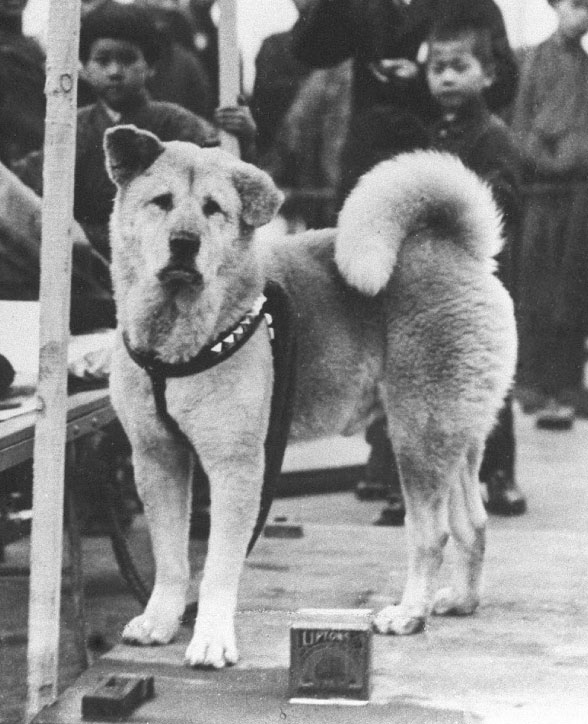
Hachikō (c. 1935)
Get the (free) guide
7 Ways You Can (And Should) Be More Like Your Dog
Join our community of like-hearted Hachi fans and get our free guide to help you live as Hachi-like as possible.
The real story of Hachikō
In November 1923, an Akita puppy was born in a barn in Odate, Japan. In the mountains of this northeast region, the dignified little pup stretched out his paws and took his first steps. He belonged to a prosperous farmer, and the puppy’s father came from one of the finest pedigree lines in Odate. In 1924, the puppy was given to a man with whom he would forge an incredible, unshakable bond — unbroken even by death.
This is where the legacy begins…
The Legacy of Hachikō
Ueno Hidesaburo was a professor in the Department of Agriculture at the Imperial University of Tokyo (now The University of Tokyo). Not in the market for a pup, Ueno unexpectedly accepted Hachikō as a gift from his former student, Mase Chiyomatsu, the head of the Arable Land Cultivation Section of the Akita prefecture. A respected scholar and authority on agricultural civil engineering in Japan, Ueno was recognized for extraordinary contributions in his field. And while he was a dog lover (he owned 16 dogs in his lifetime), he’d never had a pup like Hachikō. The two would endure a bitter beginning, but it only served to strengthen their affections.
In the winter of 1924 Hachikō arrived in Tokyo to meet Ueno. A fragile pup in poor health, Hachikō slept under Ueno’s western-style bed, wrapped in fabric. (In those days it was rare to find dogs indoors.) Hachikō became weaker and developed a fever, causing Ueno and his wife to bolster their efforts to nurse him back to health. They kept his head cool with ice bags and packed hot water bags beside his feeble little body.
Within the next six months, Hachikō's health improved. Ueno took Hachikō for walks with his other dogs, two English Pointers named John and Esu. John and Hachikō got along well; however, Esu was aggressive toward him, perhaps sensing the unique friendship his owner shared with Hachikō. Nonetheless, Ueno took special care of Hachikō, catering to his every need. He brushed his thick coat daily and fed him rich meals of rice with broth, milk and liver treats. He spoiled Hachikō the way modern dog lovers spoil their pups. In those days, such affection for animals was outside the norm.
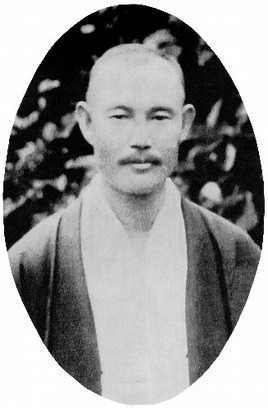
Professor Ueno unexpectedly became Hachikō's owner. Although he owned 16 dogs in his lifetime, he'd never had a pup like Hachikō.
An unforgettable bond is formed
Every morning Hachikō accompanied Ueno to Shibuya Station where the two would part ways for the day, Ueno boarding the train for work. Rain or snow, Hachikō would return to the station to greet his beloved companion at the end of each day. Their routine continued for years, and provided constant comfort and unwavering friendship to the other.
But, sadly, a turn of events would tragically end their daily ritual…
On May 21, 1925, Hachikō watched his friend Professor Ueno board the train for the last time. That day, while lecturing his students, the 53-year old professor suffered a fatal stroke. It would be the last day Hachiko ever saw the professor again.

Hachikō would walk with Uneo to Shibuya Station each day, and return to wait for him at the end of the day.
Why didn’t Ueno’s wife keep Hachikō?
Ueno and his wife, Yaeko, were not legally married. Ueno was betrothed to a woman from a prominent family, but he fell in love with Yaeko. His family disapproved of their union, so Ueno and Yaeko went away to live together. She was known as “Mrs. Ueno.”
When Ueno died, she had no legal rights to the house, so she was forced to go live with an acquaintance. Practically speaking, it was difficult for her to keep a large dog like Hachikō during these transitions, which is why she sent him to live with a relative who lived in Asakusa, in the eastern part of Tokyo.
Hachikō demonstrates his amazing loyalty
Despite the distance, however, Hachikō would repeatedly run back to his former house in Shibuya. Concerned for the dog’s health and safety, the professor’s former gardener, Kikusaburo Kobayashi, took Hachikō in, having known Hachikō for years. The dog longed for his owner, and the bond was proving to be unbreakable.
In fact, the bond was so cemented in time that Hachikō would spend the rest of his life searching for Ueno. Every morning, he returned to the train station. Every evening, he did the same. But Ueno never came back.
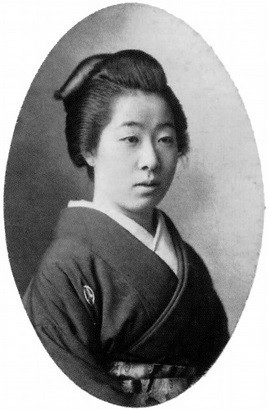
Yaeko Ueno - "Widow" of Prof. Ueno, beloved master of Hachikō, the Akita dog.
Hachikō makes headlines
Although Hachikō was not a stray, people around the station assumed he was - why else would a dog be there by himself? As such, some of the employees treated him poorly. They would paint his face with a mustache and children would tease and taunt. Vendors even went so far to pour water on Hachikō, hoping it would make him leave and not return. He was seen as a nuisance... an abandoned, unwanted beast.
When one of Ueno’s students, Hirokichi Saito, recognized Hachikō, he attempted to stop the abuse. He contacted a local media outlet, the Asahi Shimbun, and on October 4, 1932 they published a story.
The story’s headline read: “Tale of a Poor Old Dog: Patiently Waiting for Seven Years for the Dead Owner.”

Hachikō was thought to be a stray since he frequented the train station by himself. At first he was treated poorly and seen as a nuisance.
Compassion is contagious
As one would expect, the story of Hachikō gained instant traction and spread throughout Japan. Soon, shopkeepers and visitors were bringing Hachikō food, making donations to the station master to help. Children began petting him. A well-known actor, Inoue Masao, befriended Hachikō after he saw him sitting at the station. He bought beef to feed Hachikō but would depart whenever a crowd would form.
Because of Hachiko, homeless dogs also began to receive better treatment. The loyal dog’s story seemed to soften everybody's hearts and change their perceptions about stray dogs. No longer were these ragged animals viewed as a threat. Instead, they were embraced with love.
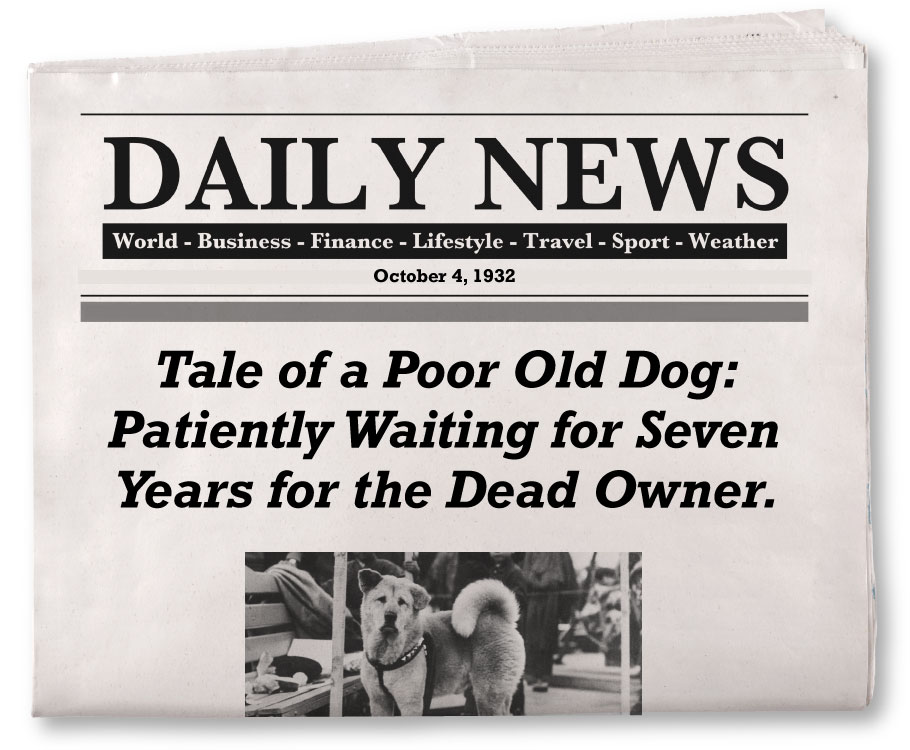
Once the media got the heart-warming story of Hachikō out to the public, the people began to see Hachikō as a hero; treating him with love, respect, and kindness.
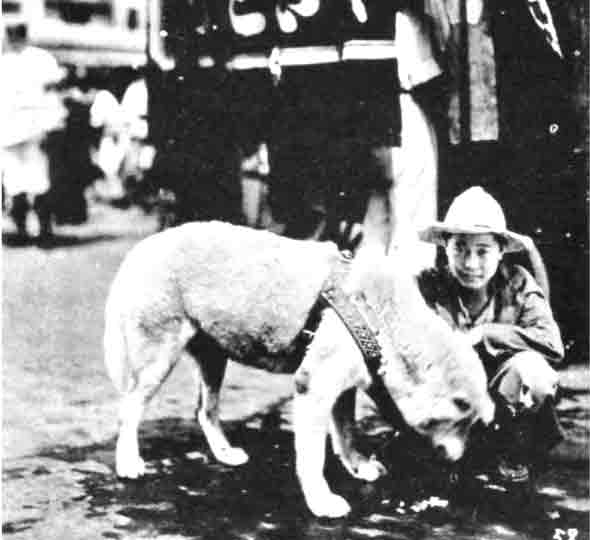
Once they knew his story, the merchants had compassion for Hachikō.
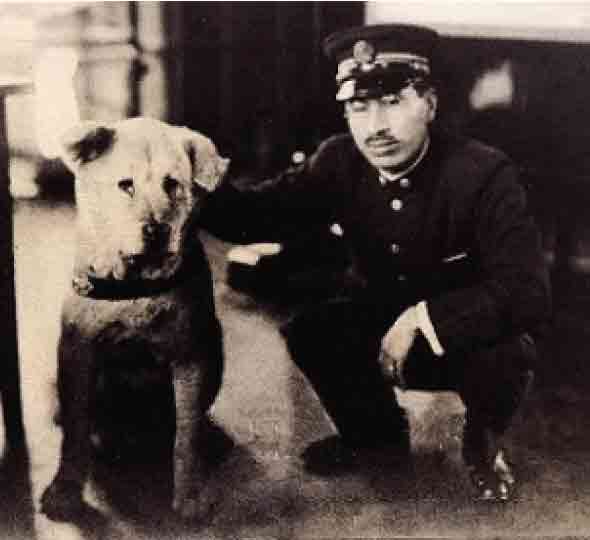
Hachikō sits with a train conductor at Shibuya Station.
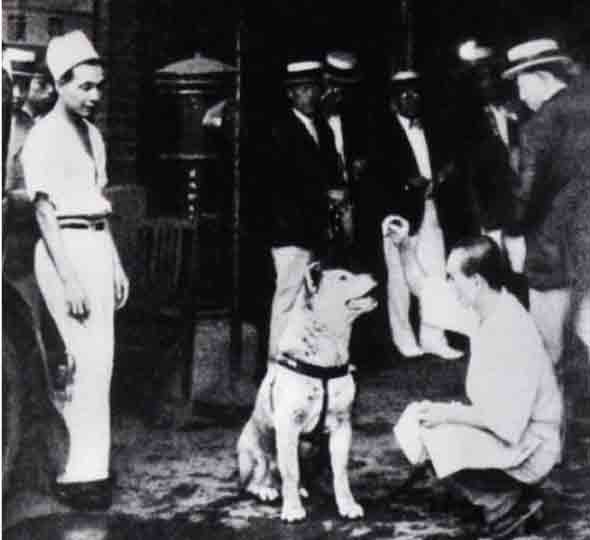
People brought Hachikō food and fed the loyal dog.
The iconic Shibuya Station Hachikō statues
In 1933, the sculptor, Teru Ando, saw Hachikō for the first time at the station. Impressed by Hachikō's proud appearance and composure, Ando saw the opportunity to create a new kind of art, one which would serve as a tribute to the gentle dog-hero whose story was so compelling.
Ando sculpted a plaster statue of Hachikō for the Imperial Fine Arts Academy Exhibition. In 1934, a bronze statue was erected in front of the ticket gate of Shibuya Station with a poem engraved on a placard with the title “Lines to a Loyal Dog.”
A throng of people arrived for the festive unveiling, including the grandchildren of Professor Ueno. Hachikō, who was also in attendance, wore red and white scarves for the event, seeming to understand the impact he had made. All of this, however, did not stop Hachikō from continuing to wait for Ueno’s return, although now he waited by his new post – beside the bronze sculpture. Locals recall seeing Hachikō gazing at the statue.
In 1944, during World War II, Hachikō's statue was melted down to support the war efforts. Sadly, the sculptor was killed during an air raid. In 1948, his son, Takeshi Ando, replicated the bronze statue on behalf of his father and Hachikō. Furthermore, the recreation of the statue is often noted as a pivotal point in saving the Akita breed from extinction, which had been in steady decline post-war.
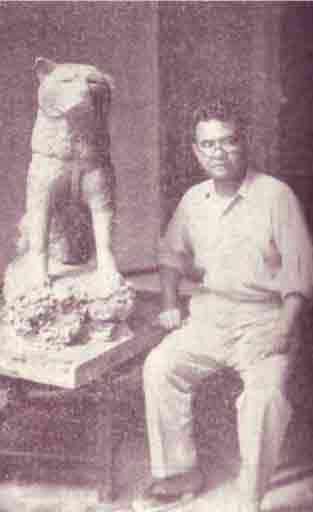
In 1933, Teru Ando created the original, plaster statue of Hachikō for the Imperial Fine Arts Academy Exhibition.
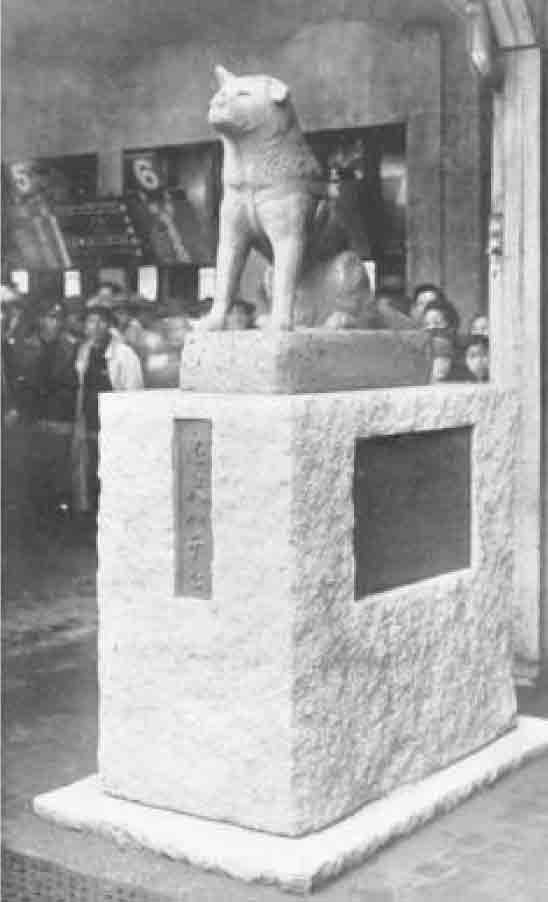
In 1934, Ando's sculpture of Hachikō was replicated in bronze and placed at Shibuya Station, Tokyo. This statue was melted down in 1944 to support the war efforts.
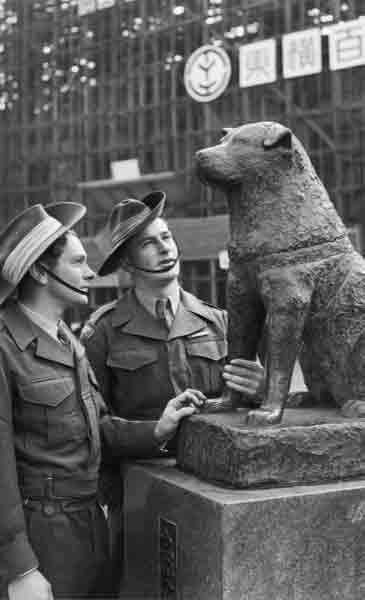
In 1948, Ando's son replicated the (melted-down) bronze Hachikō statue at Shibuya Station, Tokyo. This helped save the Akita dog breed from extinction.
Faithful to the End
Hachikō's years on the street left him battle-scarred and underweight. One of his ears drooped and he suffered from severe heartworms. By 1935, he became weaker and was no longer able to walk back to the gardener’s home. Hachikō spent most of his days sprawled out on the station ground, eyes still searching for his master.
On March 7, 1935, a station employee noticed Hachikō walking into secluded rooms and going into shops where he had been treated kindly, perhaps looking for a familiar face. He was last seen asleep on a wooden bed by the baggage room.
On the morning of March 8, 1935, a concerned employee noticed Hachikō had gone from his bed. Worried, he searched the area and found Hachikō lying on the side of the road.
Hachikō waited almost ten years for the professor. He died at the age of thirteen.

After spending years on the streets, Hachikō was getting old.
Want to see how your personality traits align with Hachi's? Take the Hachi Quiz to find out »
Nation Mourns Loyal Dog
Yaeko came to place flowers and black and white ribbons on Hachikō's statue. Soon, news about Hachikō's passing spread throughout the community. The locals believed Hachikō's late night visits to the shopkeepers during his last days were a final goodbye. Thousands of people gathered around Hachikō's statue with sweet treats, flowers, cards, and letters.
On March 10, 1935, a small memorial was held at Hachiko's shrine which was located next to Ueno’s resting place.
Hachikō's death made front page news, and the people of Japan deeply mourned his passing. Schools in Japan often cited Hachikō to their students as an example of loyalty, friendship and good character.
He was buried next to Professor Ueno.
Finally reunited in death, it doesn’t take much to imagine the comfort Ueno and Hachikō now share, once again side by side.
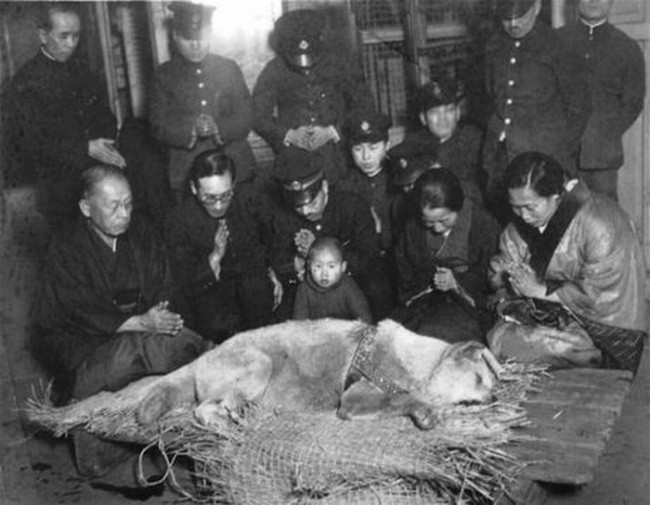
Last photo of Hachikō, Japan’s most beloved dog.
Hachikō's legacy lives on through statues, monuments and sculptures.
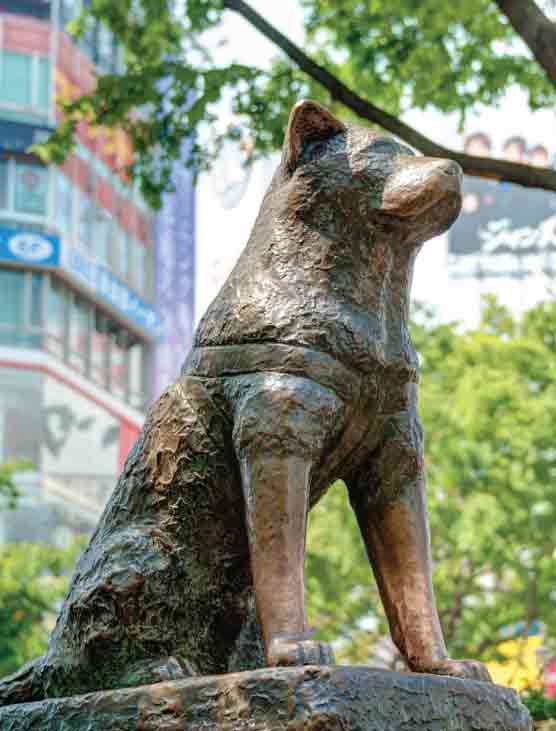
Hachikō statue at Shibuya Station as it is today. The surrounding plaza is Tokyo’s most popular rendezvous point and is always abuzz.
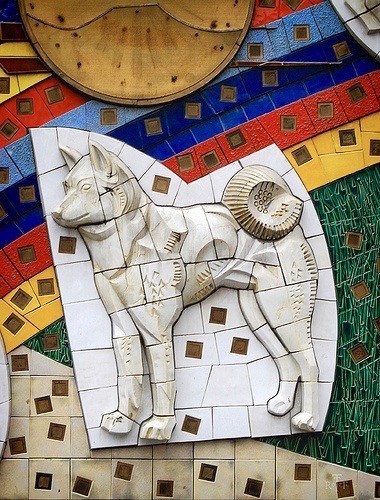
Hachikō low relief sculpture at Shibuya Station in Tokyo. The station entrance near this statue is named "The Hachikō Entrance/Exit."
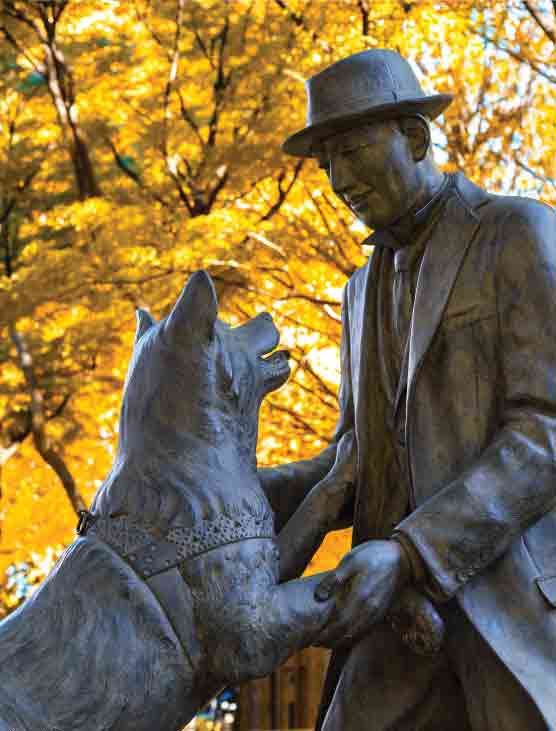
A statue of Hachikō with Professor Uneo at Tokyo University. This is where Dr. Ueno used to teach before he passed away.
Mystery of Hachikō's Real Birthdate
Hachikō's birth has been a topic of great debate. Some literature lists it as the 10th of November, while others say it was the 20th of November. As the most famous dog in Japan, the facts that were once trivial became important, with people eager to learn and understand the history behind “Hachikō loyalty.”
At the Odate Township office, a member of the Research Committee for Historical and Natural Monuments of the Akita Prefecture registered Hachikō's birth as November 20. The date was based on information from one of the original members of the Society for the Preservation of Akita. However, no pedigree certificates for dogs were issued until the Society for the Preservation of Japanese Dogs was formed in 1928.
Kurita Reizo, a former student of Ueno, stopped at Shibuya Station on his way to a business meeting on March 9, 1935, when Hachikō's memorial service was being conducted. Kurita’s colleague mentioned that Hachi was from Odate and was raised by their former teacher. That’s when Kurita realized that Hachikō was the puppy he had chosen for the professor. Kurita recalled sending the puppy to the professor around January 7 or 8, 1924. He was certain about the puppy’s arrival in Tokyo because a big earthquake hit the night after he shipped Hachikō – at 5:50 a.m. on January 15, 1924.
Akita puppies were delivered from the breeder before they were two months old. If Hachikō left Odate on January 14th, 1924, he was most likely born around two months prior. Based on these facts, Hachi’s most accurate birth date is now November 14, 1923.
Hachi: A Dog's Tale
Hachi: A Dog’s Tale is a profoundly moving film — an American adaptation of the Japanese Akita — a loyal dog named Hachikō. The movie was inspired by a combination of Hachikō’s true story and the friendship between Producer Vicki Wong and her dog Hachi. She created this space to share Hachi’s powerful story and all he represents with the world. Her mission is to promote compassion and respect for our cherished animal friends.
Can’t get enough Hachi? Learn how to transform your life by uncovering your inner Hachi, bringing out your best canine qualities and reminding yourself why how you live each day really matters. Sign up now for our exclusive FREE life lessons eCourse »
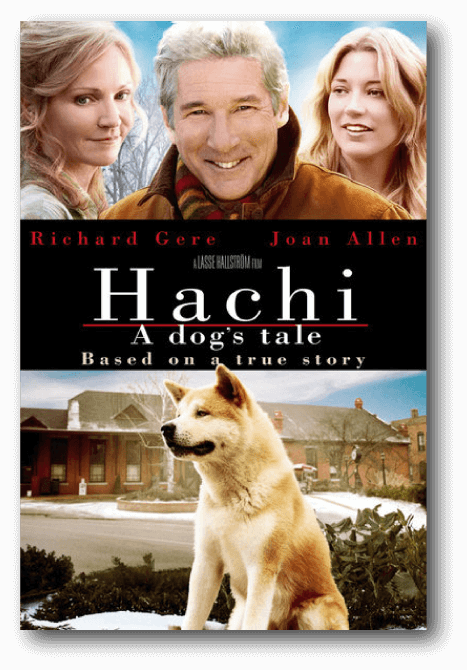
Everyone who sees the film, young or old, man or woman, from any background, shares an unshakable response to Hachi’s story – an emotional explosion of love and gratitude…an awakening to what truly stirs their soul.


Many thanks to writer and historian Mayumi Itoh, the “Official Biographer of Hachikō” for her invaluable contribution to Hachikō's Legacy page. You’ll find lots of fascinating information about Hachikō in her book “Hachikō: Solving Twenty Mysteries About the Most Famous Dog in Japan.”

 >
>
